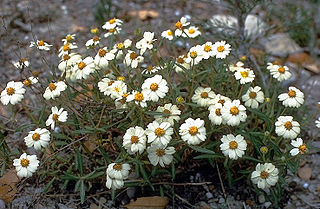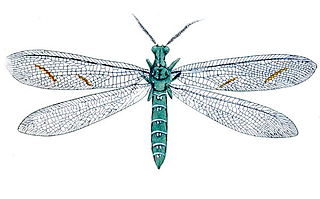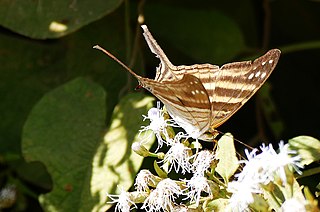
Convolvulaceae, commonly called the bindweeds or morning glories, is a family of about 60 genera and more than 1,650 species. These species are primarily herbaceous vines, but also include trees, shrubs and herbs. The tubers of several species are edible, the best known of which is the sweet potato.

Agaricus bisporus, commonly known as the cultivated mushroom, is a basidiomycete mushroom native to grasslands in Eurasia and North America. It is cultivated in more than 70 countries and is one of the most commonly and widely consumed mushrooms in the world. It has two color states while immature – white and brown – both of which have various names, with additional names for the mature state, such as chestnut, portobello, portabellini, button and champignon de Paris.

Limonium is a genus of about 600 flowering plant species. Members are also known as sea-lavender, statice, caspia or marsh-rosemary. Despite their common names, species are not related to the lavenders or to rosemary. They are instead in Plumbaginaceae, the plumbago or leadwort family. The generic name is from the Latin līmōnion, used by Pliny for a wild plant and is ultimately derived from the Ancient Greek leimon.

Melampodium is a genus of flowering plants in the sunflower family.

Grass skippers or banded skippers are butterflies of the subfamily Hesperiinae, part of the skipper family, Hesperiidae. The subfamily was established by Pierre André Latreille in 1809.

Nyctaginaceae, the four o'clock family, is a family of around 33 genera and 290 species of flowering plants, widely distributed in tropical and subtropical regions, with a few representatives in temperate regions. The family has a distinctive fruit type called an accessory fruit or anthocarp, and many genera have extremely large pollen grains.

Entoloma sinuatum is a poisonous mushroom found across Europe and North America. Some guidebooks refer to it by its older scientific names of Entoloma lividum or Rhodophyllus sinuatus. The largest mushroom of the genus of pink-spored fungi known as Entoloma, it is also the type species. Appearing in late summer and autumn, fruit bodies are found in deciduous woodlands on clay or chalky soils, or nearby parklands, sometimes in the form of fairy rings. Solid in shape, they resemble members of the genus Tricholoma. The ivory to light grey-brown cap is up to 20 cm (7.9 in) across with a margin that is rolled inward. The sinuate gills are pale and often yellowish, becoming pink as the spores develop. The thick whitish stem has no ring.

Entoloma is a genus of fungi in the order Agaricales. Called pinkgills in English, basidiocarps are typically agaricoid, though a minority are gasteroid. All have salmon-pink basidiospores which colour the gills at maturity and are angular (polyhedral) under a microscope. The genus is large, with almost 2000 species worldwide. Most species are saprotrophic, but some are ectomycorrhizal, and a few are parasitic on other fungi. The type, Entoloma sinuatum, is one of several Entoloma species that are poisonous, typically causing mild to severe gastrointestinal illness.

Erioderma is a genus of lichen-forming fungi in the family Pannariaceae. They are commonly called mouse ears or felt lichens, and are small, pale brown to olive-brown foliose cyanolichens with a fuzzy upper surface that have the cyanobacteria Scytonema as their photobiont. Most species are found in the tropics of Central and South America, although three species are found in coastal regions of North America where they generally grow on mossy branches in humid sites. All North American species are rare. Species of Erioderma can resemble Pannaria, Leioderma, or small Peltigera, but their fuzzy upper surface and lack of veins on their lower surface distinguishes them from these lichens.

Limonium sinuatum, commonly known as wavyleaf sea lavender, statice, sea lavender, notch leaf marsh rosemary, sea pink, is a Mediterranean plant species in the family Plumbaginaceae known for its papery flowers that can be used in dried arrangements.

Euptilon is a genus of antlions in the family Myrmeleontidae. There are about five described species in Euptilon.
Cecropterus casica, the desert cloudywing, is a species of dicot skipper in the butterfly family Hesperiidae. It is found in Central America and North America.

Lycaena editha, known generally as the Edith's copper or great gray copper, is a species of copper in the butterfly family Lycaenidae. It is found in North America.

Proteides mercurius, the mercurial skipper, is a species of dicot skipper in the butterfly family Hesperiidae. It is found in the Caribbean Sea, Central America, North America, and South America.

Marpesia chiron, the many-banded daggerwing, is a species of daggerwings, map butterflies in the family Nymphalidae. It is found in Central America, North America, and South America.
Aradus funestus is a species of flat bug in the family Aradidae. It is found in North America.
Aradus depictus is a species of flat bug in the family Aradidae. It is found in North America.

Electrostrymon angelia, the fulvous hairstreak, is a species of hairstreak in the butterfly family Lycaenidae. It is found in North America.

Verbascum sinuatum, commonly known as the scallop-leaved mullein, the wavyleaf mullein, or Candela regia, is a species of perennial herbaceous plants in the genus Verbascum (mullein), growing in heavy soils in Central Asia and the Mediterranean region. It grows to 1.2–1.5 m (3.9–4.9 ft). The plant has an erect inflorescence stem, and is entirely covered with stellate hairs (trichomes) which are not pleasant to the touch.

Limonium bonduellei, the yellow statice, is a species of flowering plant in the family Plumbaginaceae. The Global Biodiversity Information Facility calls it Algerian statice and lists it as Limonium sinuatum subsp. bonduellei, but a 2018 molecular study showed that it is good species with 100% bootstrap support. An annual facultative halophyte reaching 50 cm (20 in), it is native to Spain and North Africa, and has been introduced to Italy. It is naturalized in New Zealand.
















